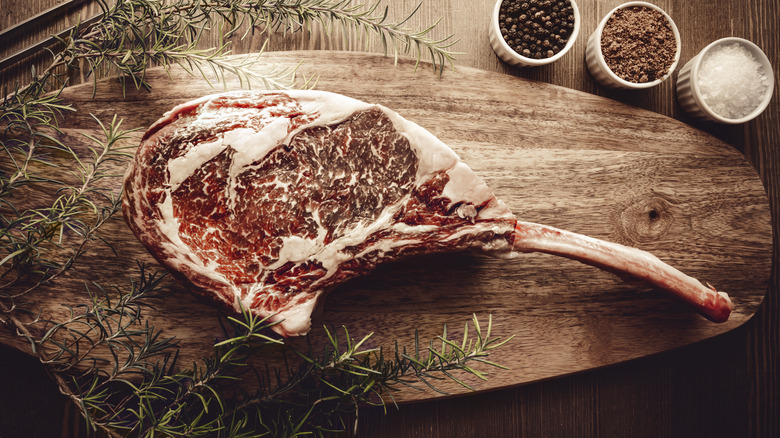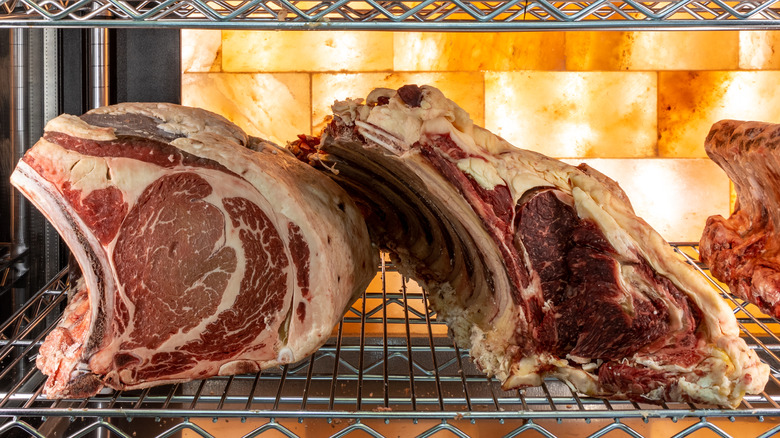The Ideal Spot In The Fridge To Dry Age A Cut Of Meat
Nobody likes tough beef, and while there are several strategies for tenderizing your meat, dry aging produces the tastiest and most fork-tender result. Because of the lengths of time required (sometimes months) as well as the necessity of using a temperature- and humidity-controlled environment, most dry aging is done commercially. But, by observing certain precautions, it is safe to try dry aging at home using your refrigerator. The best location to do that is in the coldest spot: ideally, the back of the bottom shelf. Even better, if you're dry aging a lot of meat at home, is to get a mini-fridge exclusively for this purpose.
Essentially, dry aging exposes beef to air (which enhances flavor by removing moisture) and tenderizes it by activating enzymes that break down molecular bonds. Apart from becoming fork-tender, successfully dry-aged beef takes on a nutty, funky flavor as a result of fat oxidation. There is, of course, a very big difference between dry aging and rotting: any meat that smells bad, has turned a purplish color, or has a slimy or sticky texture should be promptly thrown out. Dry aging at home does run the risk of bacterial contamination, so choosing the ideal location in your fridge (or, ideally, a dedicated mini fridge) to do it is essential.
Time, temperature, and humidity goals
So, what precisely do you need to dry age beef? Several things. First, select a large, whole steakhouse cut: porterhouse, ribeye, and New York strips all do nicely. Be sure to buy the whole subprimal, because you can't age individual steaks. Next, put the meat on a rack to ensure proper air circulation. Speaking of this, utilizing a spot near your refrigerator's fan is a good idea (or if you're using a mini-fridge, putting a small fan inside the fridge). Home-aging beef for two to four weeks will give the best results for most palates. You can go longer, of course, to maximize funkiness — but the resulting intensity in flavor might actually be off-putting.
Ideally, you want your refrigerator cold — between 33 and 40 degrees Fahrenheit. This is where having a dedicated beef-aging mini fridge would come in handy: the constant use of a home fridge will make temperature and humidity fluctuate. If you are using your home fridge, the coldest spot will probably be in the back of the bottom shelf. If you're worried about your meat drying out due to lack of humidity, wrapping the cut in cheesecloth will help in that department. Turn the meat several times while aging. Finally, trim off the dry surface of your meat, cut it into individual steaks, and share the resulting delicacy with someone you love.

